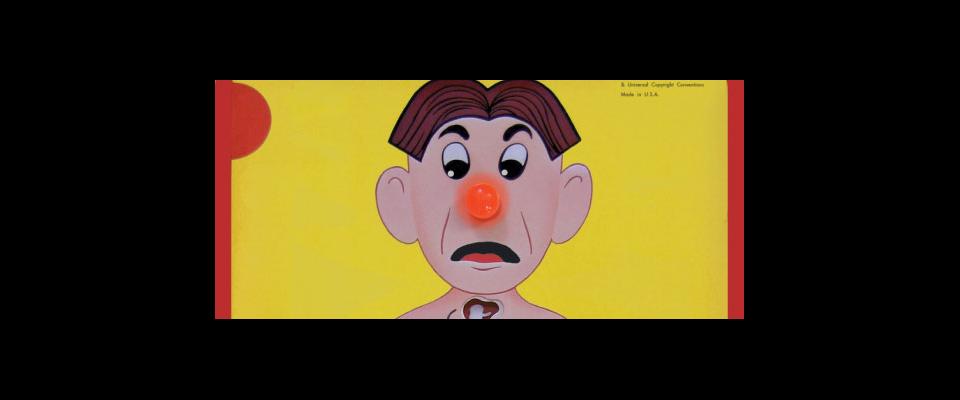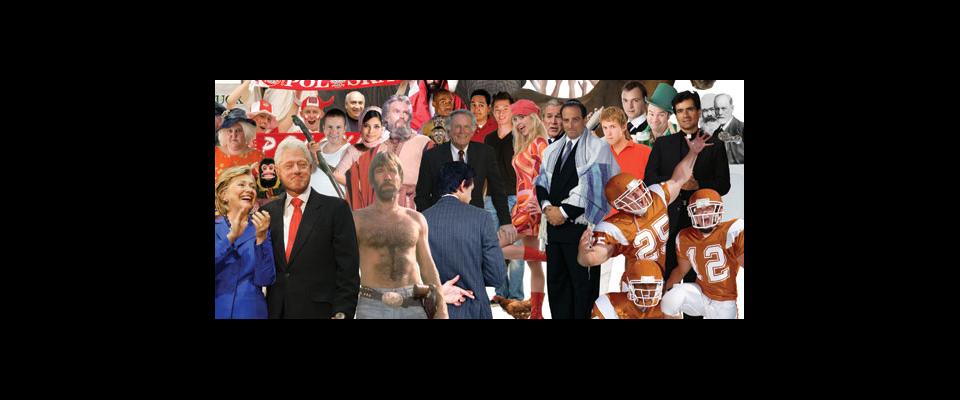Is there anything more resistant to dissection than humor? A joke, a funny situation or story…subject any of them to intensive scrutiny, parse out their elements for detailed analysis, and all you end up with are clichés, disjunct phrases, mere words. All of the qualities that make them “funny”—the social or cultural contexts, the ambiguity, the paradoxes, the snarkiness—have somehow seeped away or sublimated into the ether. It’s as though a kind of Humor Uncertainty Principle is at work: By attempting measurements, you might be able to define the essential elements that constitute something funny, but you lose whatever it is that makes it funny.
More than that, scientific inquiry tells us little about the value of humor. We know it feels good to laugh—especially if it’s at someone else’s expense. But that hardly makes humor a positive social force. Or, to echo Homer Simpson, does it?
For Dacher Keltner, a Berkeley psychology professor and the founder and faculty director of the university’s Greater Good Science Center, the dynamics of humor are no laughing matter—though in conversation, Keltner is quick to guffaw anyway. Humor, he insists, is serious stuff. It challenges ossified conventions, serves as a device for minimizing trauma, and functions as a social leveler.
To a certain degree, says Keltner, “funniness” varies from culture to culture. What generates explosive laughter in Vladivostok may elicit, at best, a pained grimace in New York. Still, certain types of humor are universal in appeal. Moreover, humor is not unique to our species. Chimpanzees and bonobos laugh. Not surprisingly, simian humor is pretty basic; it is often expressed as roughhousing and other physical play. But it apparently serves as a relief valve just as it does for people. It bleeds off tension.
Humans, of course, appreciate physical humor as much as any chimp. A buffoon getting whacked with an inflated pig’s bladder could get as many laughs today as it did in a 16th century Commedia dell’Arte presentation. Verbal humor, though, is another matter—language is a unique attribute of our species, and it creates layers of meaning that have no analog in physical activity or gestures.
“But it still aims toward a similar end,” Keltner explains. “Jokes allow your mind to resolve the tension created by contradictory ideas. The mind is constantly representing the world at different levels, and these differences can cause great stress.”
The death of a spouse, for example, can create a profound dissonance for a person who previously approached life as being a pleasant, ordered, and positive process. There is demonstrable proof, says Keltner, that laughter helps reconcile the contradictory messages of the death of a loved one with a general belief that life is good.
“We’ve conducted research in our lab on people whose partners have died,” says Keltner. “People who recalled humorous aspects about the death process, who were able to laugh about some aspect of it—no matter how inappropriate—were doing much better (psychologically) four years later than people who weren’t.”
Humor accomplishes something else, explains Keltner: social leveling. This is especially so in Asian societies, he says, where teasing is ubiquitous, employed as both a source of amusement and a means of social control. Anyone who has traveled extensively through Southeast Asia will likely have ample anecdotal evidence of this.
In the Philippines, for example, a visitor is apt to be teased to a degree that would be considered highly inappropriate—even provocative—in the United States. Anything is fodder for a jibe: one’s weight, appearance, mode of speech, general attitude, intelligence, sexual orientation. Physical handicaps are by no means out of bounds. And yet, no one takes offense if the chaffing is returned with gusto; it is expected.
“Teasing is an essential tool for maintaining social cohesion in many Asian societies,” says Keltner. “In the United States, the emphasis is on individuality, on developing and maintaining high self-esteem.”
He suggests that our national sense of humor may have been unduly influenced by the Puritans, who were not known for their playfulness. “Like the Puritans, we continue to value the pragmatic, the concrete, the literal over everything else”—even in the academic sphere, Keltner says. He recalls consulting on the formulation of the Peterson and Seligman Values in Action Scale, an effort to empirically define cardinal social virtues and character strengths.
“Most of the values were along the lines of courage, temperance, honesty—what you might expect,” Keltner says. “I had to fight like hell to get humor included. My colleagues were quite resistant to the idea that humor is a virtue.”
That’s rather sad—except, of course, that it’s also sort of funny.





















